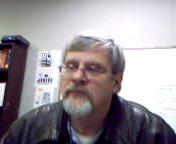You may notice that the ears are slightly darker…...they were soaked with the thin CA glue after carving, to strengthen this delicate area. Pretty sturdy now. Carving is “subtractive-sculpture” in that you take away wood to create. And a lot of what you “see” is what is also the negative spaces created. The shadows that are created give depth and create illusions of bone, nostrils, and facial planes.
I drilled a 1/8” hole in the bottom of the head, positioned it at the angle I wanted, and then glued it up using a piece of old inner-tube as a clamp. And here is the piece after the glue line has been carved and sanded. You can barely see it in certain areas now, but the edge if the blanket and normally the mane are used to disguise it usually. It will be completely invisibile after applying gesso and paint. I felt like the mane didn’t quite come down far enough to the saddle, so I carved and added an additional piece to the mane at the bottom…..I’m still looking at it and will probably re-carve or re-move that piece.
Here is how it is looking over-all…should be getting the tail on next. I have a lot completed, but there remains quite a bit…....the base, the mechanism for movement, the hat, paint, and finish. And whatever else I decide to change, remove, or add! But I am enjoying the process, despite my protests!























